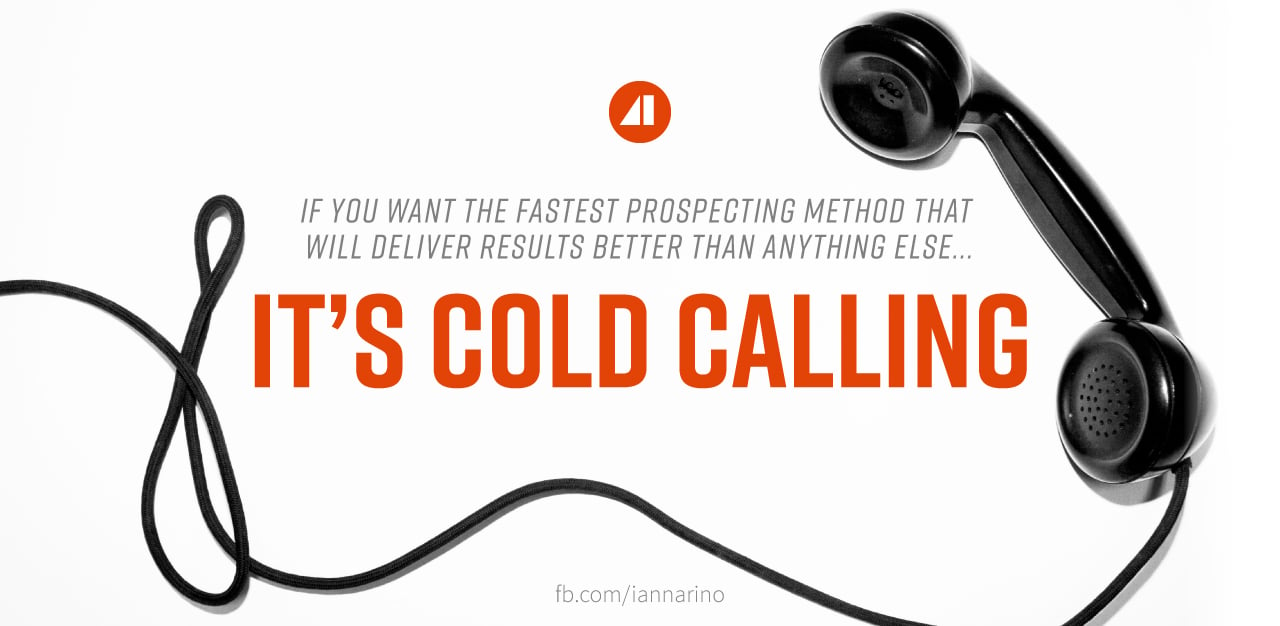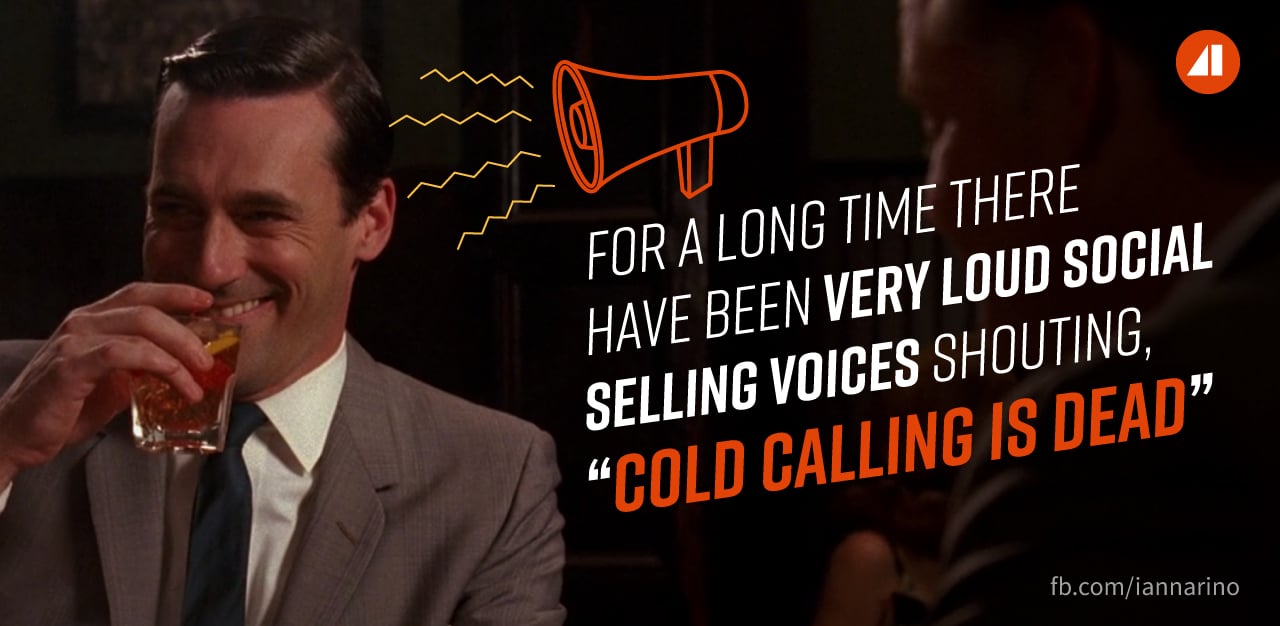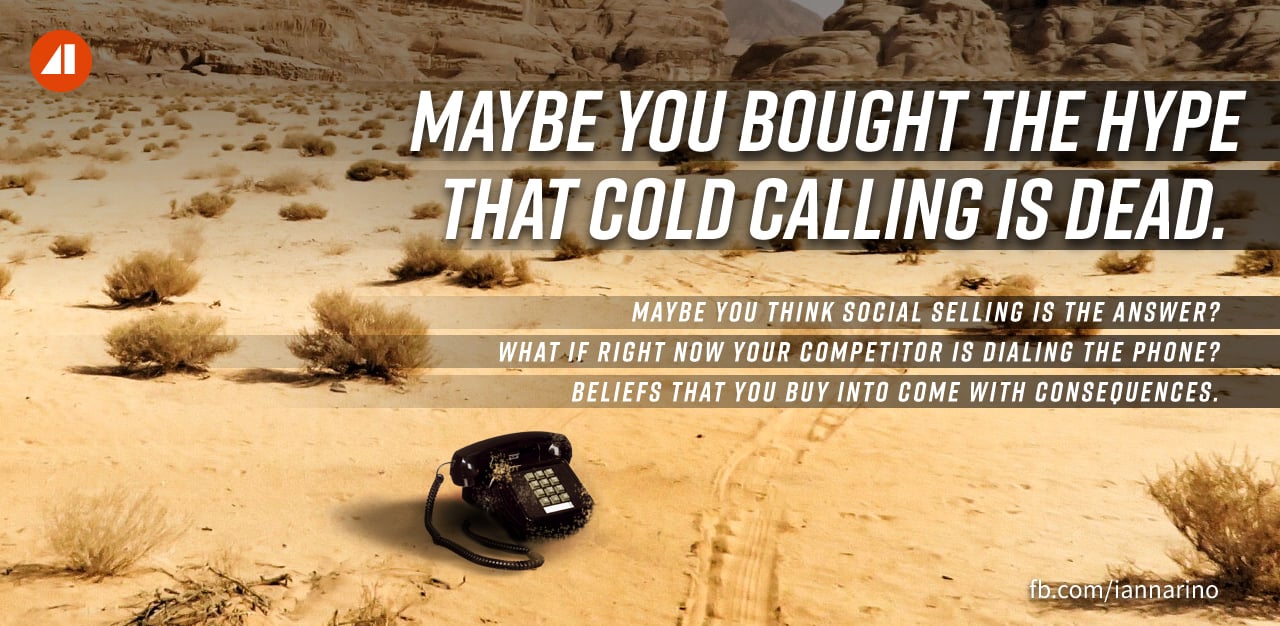I am continually tagged in Linked posts where someone writes that cold calling is dead and others rush to defend the telephone. As of late, the way some get attention is to write something negative about cold calling and suggesting that it has been replaced by “social selling,” some posting what is essentially the same tired trope every week. And while I am not anti-social tools (having personally won a $1M client using a LinkedIn InMail), I am most vociferously opposed to social-only as a strategy for prospecting.
The Phone As Straw Man
When the social tools were first used for business, the concept was called “social media marketing,” because of the great value they offered that endeavor. Some believed that the tools had value for salespeople, and the more entrepreneurial recognized the value of the tools, believing that they could use the opportunity to teach and train salespeople what eventually became “social selling.”
The very combination of the words “social” and “selling” is a bit ironic, since the rules that were laid out were generally: 1) connect with your client, 2) try to create value for them, 3) don’t try to sell. How one sells by trying not to sell is a mystery, as if one believes they sell by not selling, they are indeed selling, that being their intention.
But old mediums don’t easily die. In fact, the longer that something has been around, the longer it is likely to be around. The phone was not going to go down easy.
To sell the idea of “social selling,” the “cold call” was set up as the straw man. Cold calling became a terrible thing for a salesperson to do. It was rude to interrupt people, and that was why cold calling was so hard. No one likes to be interrupted. By taking this approach, social-only proponents preyed on the hapless salesperson who was struggling to be effective using the telephone. They suggested that the salesperson was a good person and hard worker, it was just the choice of prospecting method and their Jurassic sales managers that were the real root of their challenges. Anyone who suggested otherwise was to be attacked for being old, out of touch, and unaware of what’s what.
Suspect Statistics and Other Lies
The social only proponents used statistics to make their case. They cited research from CEB (now Gartner), suggesting that the fact that buyer is 57 percent through their buying process before contacting a salesperson is evidence that a salesperson needs to spend their time on social, framing any effort to do anything between 0 and 57 percent as futile.
They also stated bunk statistics published in reputable sources, such as 84 percent of buyers begin the process with a warm referral. I have yet to see a pipeline of opportunities that is made up of 84 percent referrals, which you would expect were this statistic actually true. When you think of the implications of such a statistic, it would mean that all pipelines are made up of 84 percent warm referrals—or it would mean that almost none of the 84 percent resulted in a sale to the company referred. The statistic is provided, always without the backing data.
The Truth About the Phone and Social Tools
Let me tell you the truth about cold calling. That truth is that it is still the fastest and most effective way to generate new opportunities. While some point to the success of the social tools, a look at the pipelines of B2B sales organizations provides a dose of truth: the deals are coming from outbound prospecting.
Social Tools are above the funnel. And they are increasingly important. First, there is no better way to get real and actionable information on your prospects and clients. When people type their information in themselves, you can’t get better information. They are very literally providing you with what they want you to know about them.
Second, the social tools provide massive value when it comes to nurturing relationships. The content your company creates can be used to nurture relationships between attempts to call and schedule an appointment, and they can help you capture mindshare. Not playing here is to forfeit capturing mindshare, and that is now a recipe for failure when is comes to pursuing your dream clients, that being the longest of long games.
The social tools are useful, but they are not a substitute for traditional methods. They are not a replacement; they are additive, and they should be integrated.
The Final Word
I have most recently been tagged in a LinkedIn post, the author of which believes that his survey asking salespeople if they like cold calling and buyers if they like receiving cold calls is proof positive that cold calling is dead. While opinion surveys have value, as they elicit someone’s subjective view, they are not objective truth.
The question as to is cold calling dead would require that one look at pipelines to see what prospecting method resulted in the creation of an opportunity (which I believe will vary wildly by industry and target verticals). That would give you some indication of its effectiveness and value now. You would also have to look at won deals to determine whether or not the buyer said yes to a deal that was generated through a cold call, comparing that with other prospecting methods.
 Anyone honest is going to tell you that you should use every method of prospecting available in your overall client acquisition plan, provided it is effective in your industry.
Anyone honest is going to tell you that you should use every method of prospecting available in your overall client acquisition plan, provided it is effective in your industry.
Those of us who have been omnichannel forever, have never said not to use the social tools, and those who have suggested a “social only” approach have always insisted there is nothing else (even though many have had a change of heart as of late).
It is not necessary for the phone to no longer be a useful prospecting method for the social tools to have value.













